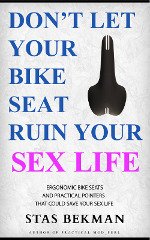Chapter II. Roasting, Boiling, Baking, Frying. Lesson First. Roasting
Description
This section is from the book "Lessons In Cookery", by Thomas K. Chambers. Also available from Amazon: Lessons In Cookery.
Chapter II. Roasting, Boiling, Baking, Frying. Lesson First. Roasting
To Roast Meat at an open range:
1. Take your joint-say a leg of mutton.
2. See that it is quite clean, and, if necessary, scrape it with a knife, and wipe it over with a clean cloth.
N. B. - As a rule, meat should not be washed in water, as it takes some of the goodness out. If meat has been kept some time, and is not quite fresh, then you might wash it with a little vinegar and water, but it must be well wiped afterward.
3. With a sharp knife cut off the knuckle-bone from the leg of mutton.
N. B. - Put aside the knuckle-bone. It can be used with beef for beef-tea, or be put in the stock-pot; or the trimmings and one pint of water will make gravy for your joint when done, allowing it to boil while the joint is roasting.
4. Trim off the piece of flank, and remove the thick piece of skin from the part where the leg joins the loin.
(These trimmings must be put aside, as they can be used for other purposes.)
5. Now weigh the leg of mutton, so as to find out how long it will take to roast it, as a quarter of an hour is allowed for each pound-weight, and one quarter of an hour besides.
N. B. - When you have a joint without bone, such as rolled ribs of beef or topside of beef allow twenty minutes to each pound, as it is all solid meat.
6. Take the leg of mutton, which weighs say seven pounds, and will therefore require two hours to roast.
7. Put the tin oven 1 in front of the fire.
8. See that the dripping-pan is in the oven with the dripping-ladle.
9. Take the hook of the oven, or of the roasting-jack, if you have one, and pass it through the knuckle-end of the leg.
10. Wind up the jack with the key before you put the joint on, so as to make it twist the meat round.
11. Put the joint close to the fire for the first five minutes.
12. After that time, draw it a little back, or it will cook too quickly, and become burnt and dried.
N. B. - Meat that is frozen must be placed some way from the fire at first, and then drawn gradually toward it, as it must thaw slowly, or it may become tough.
1 In this country, tin ovens placed before the fire take the place of the English screen and roasting-jack. These ovens are made in various ways, but they all have a door at the back for basting, a hook in the centre from which the meat is suspended, and a dripping-pan in the bottom. A French roasting-jack may take the place of the simple hook, and with this you may proceed with the roasting according to the directions given above. There are stoves and ranges so made that tin ovens for roasting can be securely fastened to the front, and taken away when not in use.
13. Baste the joint every five minutes with the drippings that run from it into the pan, using the dripping-ladle.
14. Let it roast for two hours, as its weight is seven pounds.
15. Just before you dish up the joint, you must sprinkle about a saltspoonful of salt over, and then baste it well.
16. Warm a large dish.
17. Take the hook of the jack and place the joint on the hot dish, and draw out the hook.
18. Pour about a gill of hot stock into the dish. (This makes the gravy, and when the joint is cut, the juices from the meat will add to it.)
19. Cut a piece of demy-paper like a fringe, and put it round the end of the knuckle-bone.
N. B. - The dripping in the pan should be poured into a basin, and when it is cold, there will be under the crust of dripping a good gravy. When the dripping is required for use, it must be carefully removed from the top of the gravy and clarified (see Lesson on " Frying"). Nearly all joints can be roasted in this way. Attention should be paid to the rules given above for joints of meat without bone.
Continue to:


